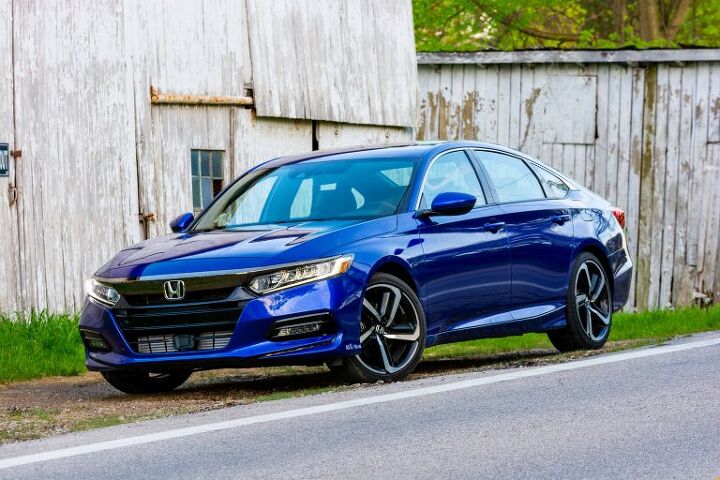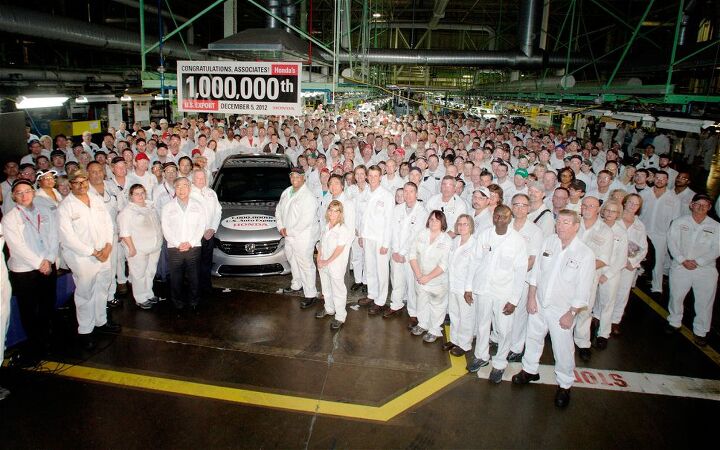#Marysville
Beancounters to the Rescue? Office Staff Keep Honda Production Afloat in Ohio
This isn’t the first time we’ve learned of an “all hands on deck” situation taking place at a U.S. assembly plant. Recall this report from earlier this month, in which sources claimed managers and other white-collar employees hit the floor at General Motors truck plants in a bid to cover absent workers.
It was inevitable, given the reality facing companies hoping to maintain full production amid a viral pandemic. The latest report comes out of Marysville, Ohio — home to an enormous Honda assembly operation. Seems even accountants had to don hardhats.
Fewer Honda Sedans Emerging From Midwest After Production Cut
Two Honda plants in Indiana and Ohio bear the brunt of a decision made last spring to tap the brakes on Civic and Accord production. At the start of the month, Honda of America suspended the second shift on one of two lines at Ohio’s Marysville Assembly Plant, the result of flagging sales that show no signs of reversal.
While Honda categorizes the move as temporary, the second shift’s return will have to wait “a few years.”
American Honda Believes Sales of the New Honda Accord Won't Fall, Sinks $267 Million Into Ohio Plant
American Honda’s vice president for sales, Ray Mikiciuk, won’t provide a firm forecast for sales of the 10th-generation Honda Accord. But as far as next year goes, “I don’t expect to sell fewer Accords in 2018 with this great new product,” Mikiciuk tells CNBC.
With belief in the company’s new product, Honda has invested $267 million into its Marysville, Ohio, plant where the Accord, Acura TLX, and Acura ILX are assembled. With 300 additional employees, American Honda is following the lead of Toyota’s all-new 2018 Camry.
At the Camry’s Georgetown, Kentucky, assembly plant, production of the new TNGA-based Camry required Toyota to build up its employee count to the highest level ever. That’s certainly not the way rivals are approaching America’s midsize segment. You’ll recall that General Motors cut Chevrolet Malibu production — and consequently, jobs — in Kansas City earlier this summer. Prior to the new Camry’s launch this summer, the Malibu was the freshest midsize sedan on the block, yet Malibu sales have plunged by more than a fifth in 2017.
Ohio production of the 2018 Honda Accord began yesterday, September 18th. But what do Honda’s vague sales forecasts mean in the broader American midsize segment?
More market share.
Acura MDX Production Moves North; Acura Is As Much of an Ohio Car Brand As Can Be
With production of the three-row Acura MDX joining the Acura RDX at American Honda’s East Liberty Auto Plant in East Liberty, Ohio, Acura has become a profoundly Buckeyed automobile brand.
Still stealing some production space at Honda’s Lincoln, Alabama assembly plant where the Honda Pilot, Honda Ridgeline, and 2018 Honda Odyssey are also built, production of the MDX has shifted to Ohio in order to free up capacity for both Honda’s and Acura’s top-selling model.
As a result of the MDX’s relocation, Acura now builds five of its six models in the state of Ohio.
And the one Acura that doesn’t hail from Ohio? That’d be the RLX, which forms less than 1 percent of the Acura brand’s volume.
Acura NSX Production Pushed Back to Spring 2016
After years of delays, a redesigned concept and lots and lots of auto show carpet time, the Acura NSX still isn’t ready for prime time.
The automaker announced today that the NSX would begin production in spring 2016, not this fall as was previously reported. Automobile first reported the delay.
A spokeswoman for Acura said delays at the Marysville, Ohio plant producing the NSX, and changing performance targets for the car were responsible for the setback.
“Since this American-made supercar is the ultimate expression of the Acura brand, we want to ensure we’re delivering the best vehicle and customer experience possible,” an Acura spokeswoman wrote.
Honda Exported More Vehicles From U.S. Than It Imported Here in 2013
The year 2013 was a record year for exports of U.S. made cars and light trucks and for the first time in its history, in 2013 Honda Motor Co. exported more vehicles from its American assembly plants than it imported into the United States from Japan. According to Automotive News, Honda exported 108,705 Honda and Acura vehicles that were made in the U.S. while it imported 88,537 units from Japan and other countries.





















Recent Comments